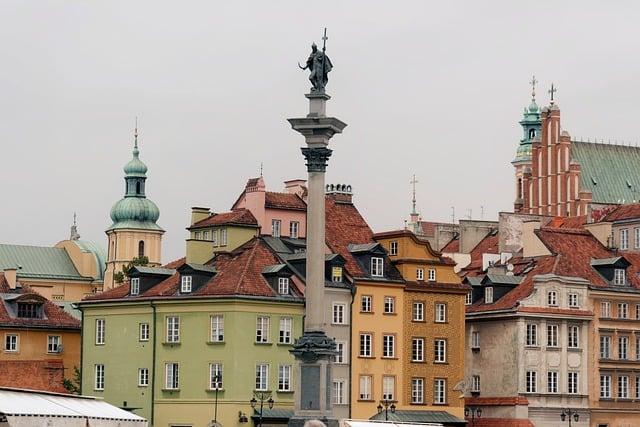In a small village, as winter’s chill settled in, the townsfolk prepared for Advent. Each Sunday, they lit a candle, its flickering flame casting warmth against the cold. One evening, a curious child asked an elder, “What does Advent mean?” The elder smiled, recalling a time of hope and anticipation. “Advent is a journey,” she said, “a time to reflect, to prepare our hearts for joy and love.” As the candles burned brighter, the village united in shared stories and laughter, discovering that Advent was not just a countdown, but a celebration of togetherness and hope.
Table of Contents
- Exploring the Historical Roots of Advent
- Understanding the Spiritual Significance of the Season
- Practical Ways to Embrace Advent in Daily Life
- Cultivating a Mindful Approach to Anticipation and Reflection
- Q&A

Exploring the Historical Roots of Advent
The origins of this sacred season can be traced back to the early Christian church, where it was established as a time of preparation for the celebration of Christ’s birth. Initially, Advent was observed as a period of fasting and penance, mirroring the solemnity of Lent. Over the centuries, the focus shifted from a purely penitential observance to one of joyful anticipation. This transformation reflects the evolving understanding of the season, emphasizing not only the coming of Christ but also the hope and light He brings into the world.
Throughout history, various traditions have emerged to enrich the Advent experience. Some of these include:
- Advent Wreath: A circular arrangement of greenery with four candles, symbolizing the passage of the four weeks leading up to Christmas.
- Advent Calendars: A fun and interactive way to count down the days until Christmas, often featuring small gifts or scriptures behind each door.
- Liturgical Colors: The use of purple or blue vestments and decorations signifies a time of reflection and preparation.
These practices not only serve to mark the passage of time but also invite individuals and communities to engage in a deeper contemplation of the significance of the season, fostering a spirit of hope and renewal as they await the celebration of the Nativity.

Understanding the Spiritual Significance of the Season
The season of Advent invites us to embark on a profound journey of reflection and anticipation. It is a time when the world slows down, allowing us to pause and consider the deeper meanings of hope, peace, joy, and love. As we light the candles of the Advent wreath, each flame symbolizes a step closer to the celebration of the birth of Christ, illuminating our path with spiritual significance. This sacred period encourages us to cultivate a sense of inner stillness, fostering a connection with the divine that transcends the hustle and bustle of everyday life.
During these weeks, we are called to embrace the themes of preparation and renewal. The act of waiting becomes a spiritual practice, reminding us that life is not merely about the destination but the journey itself. In this context, we can explore the following aspects:
- Reflection: Taking time to meditate on our personal faith journeys and the lessons learned along the way.
- Community: Engaging with others in acts of kindness and service, reinforcing the bonds that unite us.
- Gratitude: Acknowledging the blessings in our lives, fostering a spirit of thankfulness that enriches our hearts.
As we navigate through this sacred season, we are reminded that Advent is not just a countdown to Christmas, but a transformative experience that deepens our understanding of spiritual significance and prepares our hearts for the joy of the coming celebration.

Practical Ways to Embrace Advent in Daily Life
Embracing the spirit of Advent in our daily lives can transform the mundane into the meaningful. One practical approach is to create a **daily ritual** that encourages reflection and gratitude. Consider setting aside a few moments each morning to light a candle, symbolizing hope and anticipation. This simple act can serve as a reminder to pause and appreciate the blessings in your life. You might also incorporate **scripture readings** or inspirational quotes that resonate with the themes of Advent, allowing these words to guide your thoughts throughout the day.
Another way to embody the essence of this season is through **acts of kindness** and community engagement. Use this time to volunteer at local shelters, participate in food drives, or simply reach out to friends and family with messages of love and support. Creating an **Advent calendar** filled with daily challenges or good deeds can also inspire you and your loved ones to spread joy and compassion. By weaving these practices into your routine, you not only enrich your own experience of Advent but also contribute to a collective spirit of hope and renewal in your community.

Cultivating a Mindful Approach to Anticipation and Reflection
As we journey through the season of Advent, it becomes essential to embrace a mindful approach that allows us to fully engage with the themes of anticipation and reflection. This period invites us to pause and consider the deeper meanings behind our daily lives, encouraging us to cultivate a sense of presence. By setting aside time for quiet contemplation, we can explore our hopes and desires, allowing them to blossom into a richer understanding of what awaits us. This practice can be enhanced through:
- Daily Journaling: Writing down thoughts and feelings can illuminate our inner landscapes.
- Mindful Breathing: Taking moments to breathe deeply helps ground us in the present.
- Nature Walks: Engaging with the natural world can inspire reflection and gratitude.
Reflection during Advent is not merely about looking back; it is also about envisioning the future. By integrating mindfulness into our reflections, we can better understand our past experiences and how they shape our aspirations. This dual focus allows us to appreciate the journey while remaining open to the possibilities that lie ahead. Consider incorporating these practices into your routine:
- Gratitude Lists: Acknowledging what we are thankful for can shift our perspective.
- Setting Intentions: Defining clear intentions for the coming year can guide our actions.
- Community Sharing: Engaging in discussions with others can deepen our insights and connections.
Q&A
-
What is the significance of Advent?
Advent is a season of preparation and anticipation leading up to Christmas. It symbolizes the waiting for the birth of Jesus Christ and encourages reflection on themes of hope, peace, joy, and love.
-
How long does Advent last?
Advent lasts for four weeks, beginning on the fourth Sunday before Christmas and concluding on Christmas Eve. Each week focuses on different aspects of the Advent theme.
-
What are the traditional practices during Advent?
- Lighting Advent candles, each representing a different theme.
- Using Advent calendars to count down the days to Christmas.
- Participating in special church services and prayers.
-
Is Advent only a Christian tradition?
While Advent is primarily a Christian observance, its themes of hope and preparation resonate with many people, making it a time for reflection and community across various cultures.
As we embrace the season of Advent, let us reflect on its deeper significance—a time of hope, preparation, and renewal. May this journey guide us toward a brighter future, reminding us of the light that awaits us all.

大家好,我是彼得潘,專業的手法身體治療師。我喜歡探索和研究各種主題,並透過與人工智慧的合作分享專業、實用、有趣的文章。我們定期進行人工審核,以確保內容的準確性。如果您發現文章中有任何不準確的地方,請隨時與我們聯繫,我們會及時糾正。您可以透過 [email protected] 與我們聯繫。



